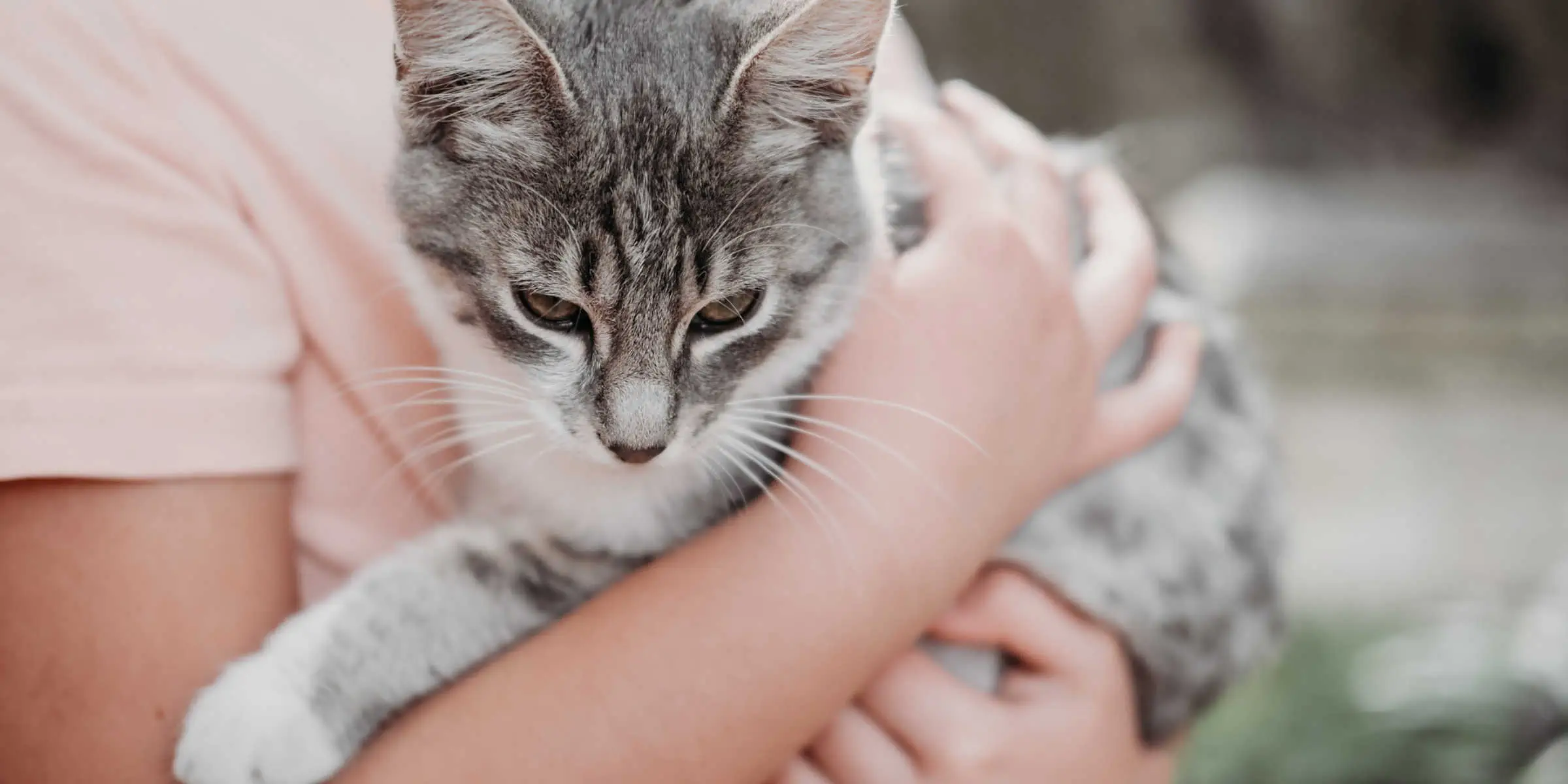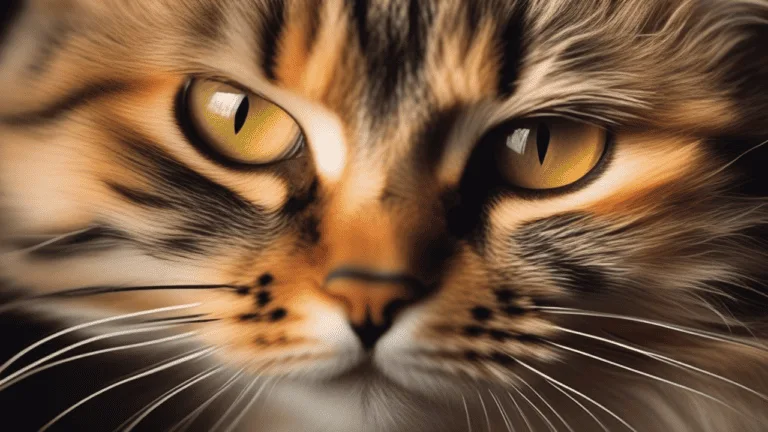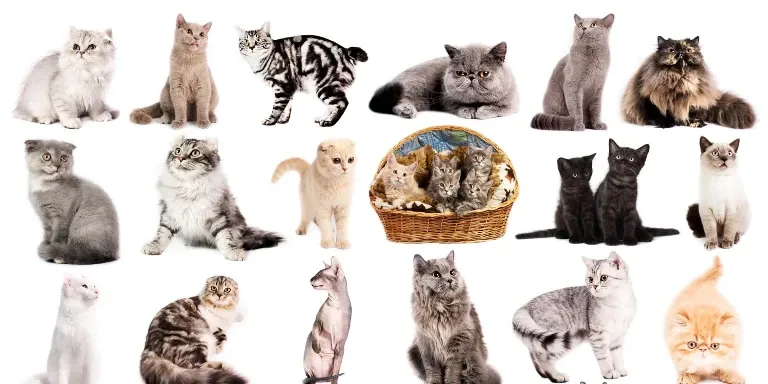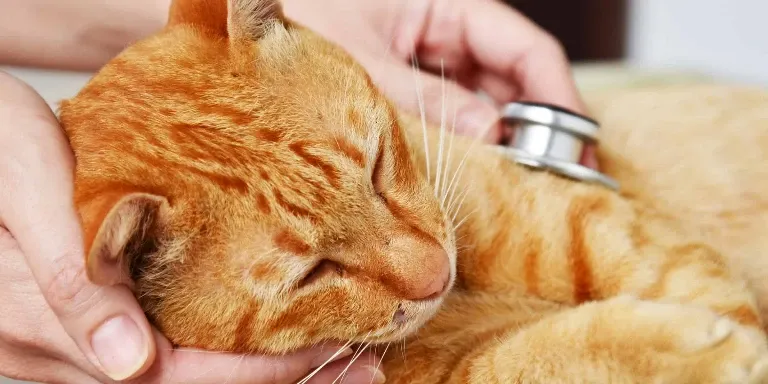The Best Fluffy Pancakes recipe you will fall in love with. Full of tips and tricks to help you make the best pancakes.

Do you have a furry friend that you love dearly, but you’re not quite sure what breed they are? Cats are fascinating creatures with a wide range of physical and behavioral traits that can be unique to certain breeds. It’s like having a mystery to solve, and figuring out your cat’s breed can add an exciting element to your bond with them.
Determining if your cat is a mixed breed can be challenging without a DNA test. However, there are some visual cues that may indicate a mixed breed cat, such as unusual coat patterns, colors, or physical features that are not typically seen in purebred cats.
If the cat was obtained from a shelter or rescue, they may be able to provide information about the cat’s background or potential mix.
Understanding domestic cat breeds can be a complex task, but it’s worth taking the time to learn about your feline companion. From their physical features to their personality traits, each breed has its own distinct characteristics. However, if your cat is a mixed breed, identifying their traits can be a bit more challenging.
In this article, we’ll explore the differences between mixed breed and purebred cats and provide you with tips on how to identify your cat’s breed-specific traits, including utilizing DNA testing, so you can embrace your cat’s unique qualities and love them even more.
Understanding Domestic Cat Breeds
If you’re curious about your cat’s breed, you may want to do some research on the various domestic cat breeds out there. Domestic cats have been around for thousands of years, and over time, different breeds have emerged.
The history of cat breeds can be traced back to ancient Egypt, where cats were revered and worshiped. Today, there are over 100 recognized domestic cat breeds worldwide.
These breeds are recognized by various breed recognition organizations, such as the Cat Fanciers’ Association and The International Cat Association. These organizations have standards for each breed, which include physical characteristics, temperament, and overall appearance.
Understanding domestic cat breeds can help you identify if your cat is a mixed breed. By knowing what breed your cat is, you can also gain insight into their behavior and potential health issues.
Researching your cat’s breed can be a fun and informative way to learn more about your furry friend.
Physical Characteristics
Identifying a mixed breed cat can be done by observing their physical traits. One of the most obvious ways to do this is by looking at their coat patterns. Purebred cats tend to have specific coat patterns that are unique to their breed, whereas mixed breed cats may have a combination of different patterns.
For example, a cat with both tabby and calico patterns is likely to be a mixed breed. Additionally, mixed breed cats may have unique markings that aren’t typically seen in purebred cats. Another way to identify a mixed breed cat is by looking at their eye colors.
While some breeds have specific eye colors, such as Siamese cats with their striking blue eyes, mixed breed cats may have a variety of eye colors. This is because eye color is a polygenic trait, meaning it’s determined by multiple genes. As a result, mixed breed cats may have eyes that are green, blue, yellow, or a combination of these colors.
Observing a cat’s physical characteristics can be a helpful way to determine if they are a mixed breed. However, it’s important to note that physical traits alone may not provide a definitive answer. Genetic testing may be necessary to determine a cat’s specific breed or breeds. Nonetheless, paying attention to a cat’s coat patterns and eye colors can be an interesting and fun way to learn more about them.
The mystery of a mixed breed cat’s origins can be intriguing and add to their charm. Seeing a unique coat pattern can make a mixed breed cat stand out and be more memorable. The variety of eye colors in mixed breed cats can be beautiful and fascinating to observe. Identifying a mixed breed cat can make you feel like a detective, searching for clues to their ancestry. Mixed breed cats may have a special and unpredictable combination of physical traits that make them one-of-a-kind.
Behavioral Traits
Understanding the behavioral traits of a mixed breed cat can give you a glimpse into their personality and help you establish a deeper connection with them. Feline personalities can be complex, but recognizing mixed breed patterns can help you understand your cat’s behavior better.
For example, a mixed breed cat’s hunting instincts may be more pronounced than in a purebred cat. You may notice them stalking and pouncing on toys or even insects more often.
Mixed breed cats tend to be more adaptable than purebred cats. They’re often more open to new experiences and changes in their environment. They may also be more sociable and enjoy interacting with humans and other pets in the household. However, it’s important to remember that each cat is unique, and their personality may not always fit into a specific pattern based on their breed mix.
Mixed breed cats may also exhibit certain temperamental traits that are specific to their breed mix. For example, some breeds are known for being more vocal than others. If your mixed breed cat has a Siamese or Burmese lineage, they may be more talkative and vocal than other cats.
Recognizing these patterns can help you understand your cat’s behavior and tailor your interactions with them accordingly.
Mixed Breed vs. Purebred Cats
When choosing a furry companion, consider the benefits of a mixed breed over a purebred cat, as they can often be more adaptable and sociable. Unlike purebred cats, mixed breed cats don’t have a specific breed standard to adhere to, which means that they aren’t prone to hereditary health issues that often plague purebred cats. In fact, mixed breed cats are often healthier and live longer lives due to their genetic diversity.
Understanding breed standards is important when it comes to identifying whether your cat is a mixed breed or purebred. Breed standards are guidelines that indicate the physical attributes and temperament of a specific breed. Purebred cats are bred to conform to these standards, which means that they will have predictable physical and behavioral traits.
On the other hand, mixed breed cats may have a combination of physical and behavioral traits from different breeds, making it more difficult to determine their ancestry. Genetic testing can also help identify whether your cat is a mixed breed or purebred. Genetic testing can reveal the breeds that make up your cat’s genetic makeup and can provide insight into any potential health issues that may arise.
While genetic testing can be expensive, it can also provide valuable information about your cat’s health and background, which can help you provide the best possible care for your furry companion.
Adopting a Mixed Breed Cat
If you want a furry companion that’s adaptable and sociable, adopting a mixed breed cat might just be the perfect choice! Mixed breed cats are a combination of various breeds and have unique characteristics that make them stand out from purebred cats.
One of the benefits of mixed breeds is that they’re less prone to genetic diseases that purebred cats are susceptible to. They also tend to have better overall health and longer lifespans.
When it comes to finding the perfect mixed breed for your lifestyle, it’s important to consider several factors. First, think about your living situation. Do you live in a small apartment or a large house with plenty of room for a cat to roam? This will help you determine what size and energy level of cat will be best for you.
Second, consider your personality and lifestyle. Are you active and outgoing, or more of a homebody? This will help you determine if you want a cat that’s more independent or one that craves attention and interaction.
Lastly, it’s important to spend time with the cat before adopting to ensure that you’re a good match. Observe their behavior and personality to see if they’ll fit in well with your lifestyle.
Adopting a mixed breed cat can be a rewarding experience and can provide you with a loyal and loving companion for many years to come.
Identifying Breed-Specific Traits
To identify breed-specific traits in your feline companion, take note of their physical characteristics such as coat length, color, and eye shape, as well as their personality traits like their level of activity and sociability.
Coat patterns are a definitive characteristic that can help identify a mixed breed cat. For instance, if your cat has a tabby coat pattern, it’s likely to have some Siamese or Burmese heritage. Similarly, if your cat has a shiny, solid coat, it could indicate a British Shorthair or American Shorthair lineage.
Eye colors can also be an important clue when identifying a mixed breed cat. Blue eyes are commonly associated with Siamese cats, while green or gold eyes are more typical of American Shorthairs. However, it’s important to note that eye color can also be influenced by various factors such as age and genetics. Therefore, it’s best to consider other physical characteristics and personality traits as well before concluding your cat’s breed.
In addition to physical traits, personality traits can also provide insight into your cat’s breed. For instance, if your cat’s highly active and playful, it could have some Bengal or Abyssinian heritage. On the other hand, if your cat’s more laid-back and enjoys snuggling, it could have some Persian or British Shorthair ancestry.
By taking note of your cat’s physical and personality traits, you can gain a better understanding of their breed and provide them with the best care possible.
Utilizing DNA Testing
Get ready to uncover the hidden secrets of your feline friend’s ancestry and be amazed by the mind-blowing accuracy of DNA testing.
Utilizing DNA testing is the most reliable way to determine whether your cat is a mixed breed or not. With the advancements in DNA technology, it’s now possible to trace your cat’s ancestry with astounding precision.
The accuracy of DNA testing can’t be overstated. It can identify specific breeds that are present in your cat’s genetic makeup, even if they’re not immediately apparent by physical traits alone.
The test analyzes the DNA in your cat’s saliva or blood sample and compares it to a database of known cat breeds. This allows for a comprehensive breakdown of your cat’s ancestry, which can be a fun and informative way to learn more about your pet.
While professional testing services are available, they can be costly. Fortunately, there are affordable DNA test kits available for home use that provide the same level of accuracy. These kits are easy to use and can be purchased online.
By utilizing DNA testing, you can uncover the hidden secrets of your feline friend’s ancestry and gain a deeper understanding of your cat’s unique traits and behaviors.
Embracing Your Cat’s Unique Traits
When it comes to mixed breed cats, it’s important to celebrate their individuality. Embrace their unique traits and provide the best care possible. With DNA testing, you can gain insight into your cat’s breed and tailor their care accordingly. This ensures they lead happy and healthy lives.
Remember, every cat is different and has its own personality and needs. By embracing these differences and providing personalized care, you’ll be able to create a strong bond with your furry friend. So, don’t be afraid to let your cat’s unique traits shine through.
Celebrating Your Cat’s Individuality
Embracing your feline’s unique traits and personality is key to celebrating their individuality as a mixed breed. Each cat is different, and mixed breeds offer a fascinating combination of different traits that make them one-of-a-kind.
By embracing the differences and celebrating the quirks of your feline friend, you can create a stronger bond with them and appreciate their unique qualities. One way to celebrate your cat’s individuality is by observing their behavior.
Does your cat have a favorite toy? Do they prefer a certain type of food or treat? These traits can give you insight into your cat’s personality and preferences. Additionally, noticing physical characteristics like the shape of their ears or the color of their fur can also be a way to appreciate their mixed breed heritage.
By taking the time to appreciate your cat’s individuality, you can deepen your bond and create a more fulfilling relationship with your furry friend.
Providing the Best Care for Your Mixed Breed Cat
Now that you’ve celebrated your cat’s individuality, it’s time to focus on providing the best care for your mixed breed cat.
Balancing nutrition is essential for your cat’s overall health. Mixed breed cats can have different nutritional needs based on their breed mix, so it’s important to consult with your veterinarian to determine the best diet for your cat. High-quality cat food that meets your cat’s nutritional needs is essential for maintaining their weight and preventing health issues such as diabetes, obesity, and digestive problems.
Grooming is also an important aspect of caring for your mixed breed cat. Regular grooming not only helps to keep your cat’s coat healthy and shiny, but it also helps to prevent hairballs and other health issues. Brushing your cat’s coat regularly can also help you bond with your cat and create a relaxing and calming environment for them.
Additionally, training and socialization are crucial for your mixed breed cat’s overall wellbeing. Socializing your cat from a young age can help them develop positive relationships with humans and other animals, while training can help them learn good behavior and reduce the risk of destructive behavior.
By providing your mixed breed cat with proper nutrition, grooming, training, and socialization, you can ensure that they live a happy and healthy life.
Are There Specific Traits or Markers That Identify a Cat as a Mixed Breed?
Yes, identifying mixed breed cats can be challenging, as they may not have specific traits or markers that distinguish them as such. Typically, mixed breed cats display a combination of characteristics from various breeds, making it difficult to pinpoint their ancestry without genetic testing.
Conclusion
In conclusion, determining if your cat is a mixed breed requires an understanding of physical characteristics, behavioral traits, and breed-specific traits. While DNA testing can provide insight into your cat’s genetic makeup, it’s important to embrace your cat’s unique traits regardless of their breed.
One potential objection to this approach is the belief that purebred cats are superior to mixed breeds. However, it’s important to recognize that mixed breed cats can often have a more diverse genetic makeup, potentially leading to better health outcomes.
Additionally, mixed breed cats can have just as many endearing and unique personality traits as purebred cats. Ultimately, the most important factor in choosing a cat is finding one that fits your lifestyle and personality, regardless of their breed.








